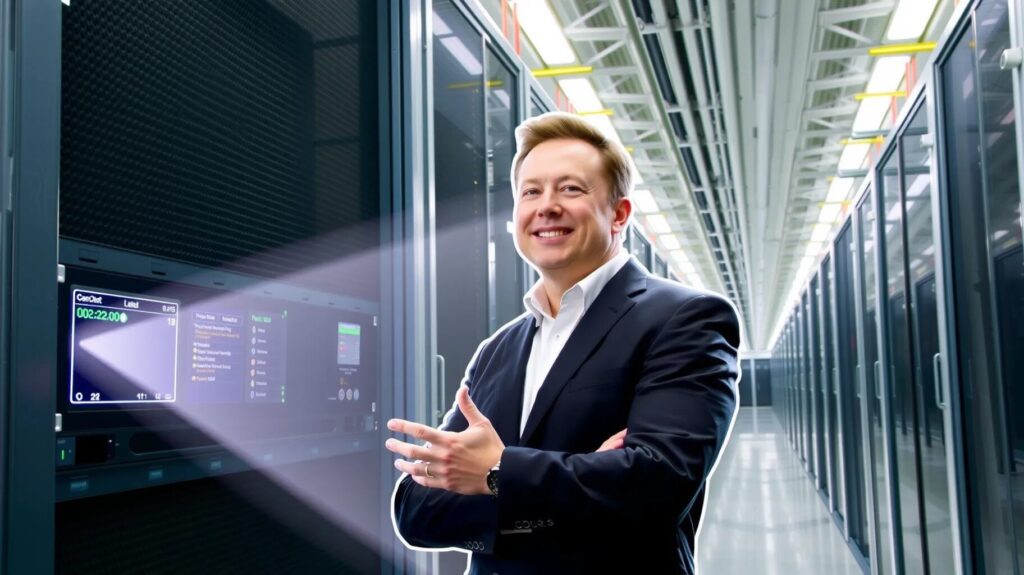
The Story of Colossus: The World’s First Programmable Computer
When you think about computers, sleek laptops or powerful desktops might come to mind. But what if I told you that the first programmable computer looked nothing like today’s devices and played a crucial role in changing the course of history? That’s the story of Colossus, the world’s first electronic digital programmable computer, built in 1943. Let’s dive into how this remarkable machine came to be and why its contributions remain monumental even today.
A War-Born Invention
The early 1940s were tumultuous years. World War II was raging across Europe, and the battle wasn’t just fought on the ground, sea, or air—it was also being fought in the secretive world of intelligence. One of the most critical challenges for the Allied forces was breaking the sophisticated encrypted messages that the Nazis were using to communicate their strategies. Enter Colossus, an invention that would not only help break these codes but also redefine what machines could do.
The Enigma of Lorenz
To truly understand why Colossus was built, we need to talk about the Lorenz cipher machine. This machine, used by the German military, encrypted messages that were far more complex than the famous Enigma. British codebreakers, stationed at Bletchley Park, knew that breaking these codes could provide invaluable information about Nazi movements and tactics, but they needed something beyond human effort to crack them.
That’s where Tommy Flowers, a brilliant British engineer, came in. Flowers proposed building a machine that could process these encrypted messages faster than any human could dream of. Although his ideas were initially met with skepticism (imagine how mind-boggling it sounded in the 1940s!), he pressed on and began developing the Colossus machine in early 1943.
The Birth of Colossus

By the end of 1943, the first Colossus computer was up and running. This marvel of engineering used over 1,500 vacuum tubes and could process 5,000 characters per second—an astounding speed for its time! It wasn’t programmable in the way we think of modern computers today, but it was an unprecedented achievement.
One of the key innovations of Colossus was its use of punch tapes to read encrypted messages. The machine would take these tapes, scan them, and compare the encrypted characters against possible cipher patterns. It was a brilliantly complex but efficient system that shaved weeks off manual decoding efforts.
Colossus’s Impact on World War II
With Colossus, British codebreakers could now break the Lorenz-encrypted messages in hours rather than weeks. This information allowed the Allies to intercept German strategies, troop movements, and military orders—all in real-time. Many historians believe that Colossus’s contributions shortened the war, saving countless lives. Without Colossus, key Allied victories such as the D-Day landings might have been far more costly or even delayed.
Colossus proved invaluable in the Battle of the Atlantic too, where breaking Nazi communications allowed Allied convoys to avoid deadly U-boat attacks. The machine’s importance was so great that its existence remained top secret for decades after the war ended.
Colossus and the Dawn of Computing
Though Colossus was a groundbreaking achievement, it’s a little-known fact that for many years, it remained out of the limelight. Why? After the war, British officials destroyed most of the Colossus machines and locked away the knowledge of their creation. They didn’t want this groundbreaking technology to fall into the wrong hands. It wasn’t until the 1970s that the world learned about Colossus and the role it played in both cryptography and the birth of modern computing.
While machines like ENIAC often receive credit for being the first general-purpose electronic computer, Colossus stands tall as the first programmable computer designed to tackle a real-world problem. Its influence helped inspire future designs in the growing field of computer science.
As we stand on the shoulders of technological giants, it’s essential to remember Colossus—a machine born out of necessity but one that opened the door to an entire industry.
Colossus 1943 vs. Modern Supercomputers: A Comparative Analysis
| Feature | Colossus (1943) | Modern Supercomputers (e.g., Fugaku, Summit) |
|---|---|---|
| Primary Purpose | Codebreaking (Lorenz Cipher during WWII) | Diverse fields: Climate modeling, AI, medicine, finance, etc. |
| Processing Power | ~5,000 operations per second | Up to 442 petaflops (Fugaku) – 442 quadrillion operations per second |
| Architecture | Vacuum tubes, mechanical switches, punched tape | Transistors, integrated circuits, high-speed data pipelines, and parallel processing |
| Programmability | Basic reprogramming capabilities for different ciphers | Fully programmable with advanced software and AI integration |
| Data Storage | Punched tape for input | Terabytes to petabytes of memory (RAM), solid-state drives, cloud storage |
| Energy Consumption | High energy usage due to vacuum tubes | Designed for energy efficiency; Summit consumes 13 megawatts but delivers significantly higher performance |
| Parallel Processing | Not available | Advanced parallel processing, handling multiple data streams simultaneously |
| Memory Capacity | No real memory, linear data processing | Terabytes to petabytes of memory for fast data retrieval and handling |
| Speed Measurement | No official FLOPS measurement | Measured in petaflops (Fugaku: 442 petaflops) |
| Applications | Codebreaking | Wide range: Scientific research, drug discovery, economic forecasting, aerospace simulations, and more |
| Artificial Intelligence | None | Integral part of modern supercomputers, used for machine learning and deep learning tasks |
| Security Features | Focused on breaking codes | Advanced encryption methods, cybersecurity protocols, quantum-resistant algorithms |
| Size | Filled entire rooms | More compact, though still large, with modular designs to fit in dedicated centers |
| Legacy Impact | First programmable electronic computer, paved the way for future machines | Basis for modern supercomputing, driving innovation in various industries |
| Handling Big Data | Limited by mechanical input and output processes | Capable of processing exabytes of data for real-time analytics and large-scale simulations |
| Quantum Computing | Non-existent | Emerging field, expected to revolutionize supercomputing with qubits |
Modern Supercomputers: Titans of Data Processing

Fast forward to today, and we live in an age of supercomputers that dwarf Colossus in every conceivable way. Today’s machines, like the Fugaku in Japan or Summit in the United States, can perform quadrillions of calculations per second. Their architecture is sleek, modular, and vastly more energy-efficient than the vacuum-tube-based systems of Colossus.
These modern supercomputers tackle problems Colossus could never imagine. From simulating climate models to predicting complex molecular interactions in drug discovery, supercomputers have expanded their roles beyond cryptography. They assist scientists and researchers in solving some of humanity’s most critical challenges.
What’s more, the sheer scale of modern data processing—with zettabytes of information generated daily—necessitates the existence of these machines. Colossus may have been groundbreaking, but modern supercomputers handle data that’s beyond even its wildest dreams.
How Supercomputers Have Advanced Since Colossus
It’s almost impossible to overstate just how much supercomputers have advanced since the days of Colossus. In the years since, we’ve moved from clunky, room-sized machines to sleek processors with architectures designed to optimize performance at every turn. A single modern supercomputer chip can carry more processing power than multiple Colossus machines combined!
Advances in parallel processing have allowed modern supercomputers to divide and conquer tasks with incredible efficiency. This kind of innovation allows modern systems to manage multiple data streams at once, something Colossus couldn’t even dream of handling.
Raw Power Comparison: Colossus vs. Today’s Machines
When comparing raw computational power, the gap between Colossus and modern supercomputers is almost comical. Colossus, groundbreaking as it was, could process about 5,000 operations per second—a staggering feat for its time. Today’s machines, however, like Fugaku, can handle up to 442 petaflops (that’s 442 quadrillion calculations per second). Colossus was essentially a light drizzle compared to the thunderstorm of modern computing power.
While Colossus operated using vacuum tubes, modern supercomputers utilize transistors, integrated circuits, and even quantum mechanics to boost their speed. The shift from mechanical relays to electronics allowed for a leap in processing power, miniaturization, and energy efficiency that Colossus, with its sprawling network of cables and tapes, couldn’t have fathomed.
The Role of Artificial Intelligence in Modern Supercomputing
One key area where modern supercomputers blow Colossus out of the water is their ability to process and learn from vast datasets using artificial intelligence (AI). Today’s supercomputers don’t just perform calculations; they learn, adapt, and improve as they go. This is thanks to machine learning algorithms and neural networks, which can sift through massive datasets, recognize patterns, and make decisions.
While Colossus was designed for a specific problem—breaking codes—modern supercomputers can tackle a wide range of problems simultaneously. AI allows these machines to accelerate discoveries in medicine, climate change, economics, and more by analyzing complex variables that would take humans (or Colossus) years to process.
Energy Efficiency: Colossus vs. Modern Supercomputers
Another major factor in comparing Colossus with today’s supercomputers is energy efficiency. Colossus was an absolute power hog, requiring enormous amounts of electricity to keep its 1,500 vacuum tubes glowing and operational. In contrast, modern machines are designed with energy efficiency in mind, using far less power while delivering exponentially more computational power.
For example, Summit, one of the world’s top supercomputers, consumes 13 megawatts of power. It’s an incredible amount, but in the context of performance, it’s miles ahead of Colossus in terms of power-to-performance ratio. With green computing on the rise, energy-efficient supercomputers now play a role in solving environmental issues without contributing excessively to the problem.
Speed and Performance: Where Colossus Falls Short
Let’s not mince words: in terms of speed, Colossus simply can’t compete with the juggernauts of today. Modern supercomputers measure their speed in petaflops, performing quadrillions of calculations per second. Colossus, with its 5,000 operations per second, falls somewhere between a pocket calculator and the first generation of personal computers in terms of performance.
One of the primary reasons for this massive gap is the evolution of hardware. Where Colossus relied on punched tape for input, today’s machines use high-speed solid-state drives and advanced data pipelines that feed data into the processors at lightning speed. It’s like comparing a horse-drawn carriage to a Formula 1 car—the difference is night and day.
The Memory Gap: From Colossus to Cutting-Edge Systems
Another massive leap from Colossus to modern supercomputers is in memory capacity. Colossus didn’t have a concept of memory as we know it today. It stored data on punched tape, which meant that its operations were linear and input-based, with no ability to dynamically store and retrieve information on the fly.
In contrast, modern supercomputers have terabytes or even petabytes of memory, allowing them to store vast datasets in RAM for quick access during processing. This capability drastically increases both the speed and complexity of tasks they can handle. Colossus would have struggled to process modern big data sets, let alone store or analyze them.
How Do Colossus and Modern Supercomputers Handle Big Data?
Handling big data is one of the key areas where modern supercomputers shine and where Colossus would find itself utterly outclassed. Colossus was designed to crack a specific type of code using predefined algorithms. It processed data in small, manageable chunks, primarily dealing with ciphered messages during the war.
Today’s supercomputers, however, are built for big data analytics, processing exabytes of information in industries like healthcare, finance, and science. These machines can sort through massive datasets to find patterns, correlations, and insights that would take humans decades to unravel. The combination of advanced processors, memory systems, and parallel computing allows modern systems to tackle everything from modeling climate change to mapping the human genome.
While Colossus was revolutionary in its time, it couldn’t have handled the complex, multifaceted data streams we deal with today. Modern supercomputers can process data on multiple fronts simultaneously, distributing tasks across thousands of processors, while Colossus was focused on solving one problem at a time. This ability to multitask and process enormous datasets is what makes today’s machines indispensable in industries dealing with real-time analytics and prediction models.
Colossus’ Legacy in Shaping Future Machines
Despite being outperformed by today’s standards, Colossus’ influence on modern computing cannot be understated. It proved that machines could be programmed to solve highly complex problems far faster than humans. Colossus’ success in decoding the Lorenz cipher was one of the earliest examples of machine logic applied to a real-world problem, laying the groundwork for future computers that would be far more versatile and powerful.
The concept of a programmable computer, which Colossus pioneered, is still at the heart of modern computing. Today’s supercomputers take this concept further, with multi-core processors and software that allows them to self-correct, learn, and handle multiple tasks simultaneously. Without Colossus’ breakthrough, the development of digital computers might have been delayed by years, perhaps even decades.
In essence, Colossus may have lit the match that ignited the computing revolution. While its specific functions may seem primitive compared to today’s machines, the methodologies and concepts that emerged from its construction are still central to the design of modern supercomputers.
What If Colossus Were Built Today?
It’s fascinating to think about how Colossus might look if it were built today. With modern materials, programming languages, and hardware, Colossus would be a sleek, powerful machine. Instead of vacuum tubes, it would use transistors or even quantum processors, and instead of punched tape, it would handle data using cloud storage or solid-state drives.
If it were designed for today’s problems, Colossus might not even be recognizable. It would likely be optimized for speed, using AI algorithms and parallel processing to crack codes faster than ever. In fact, Colossus 2.0 might not even focus on code-breaking—it might be designed to manage vast amounts of encrypted data in real-time, with cyber defense and blockchain technology at the heart of its mission.
Still, the essence of Colossus’ pioneering spirit would remain. It would be a machine designed for innovation and adaptability, much like the original. However, instead of being a niche tool, a modern Colossus could be a multifunctional supercomputer applied to a wide range of computational problems.
Elon Musk’s xAI Unleashes Colossus: The World’s Most Powerful AI Supercomputer

Elon Musk has done it again. This time, through his startup xAI, he has built a technological marvel that’s turning heads across the globe. The project, boldly named Colossus, is now recognized as the world’s most powerful AI supercomputer. And the numbers behind this system? They’re staggering.
Constructed at lightning speed—just 122 days, to be exact—Colossus stands tall in Memphis, Tennessee, as a symbol of Musk’s relentless push for innovation. At its core, this AI supercomputer boasts a cluster of 100,000 Nvidia H100 GPUs, making it a powerhouse for training advanced AI models.
But what exactly does Colossus aim to achieve?
The Birth of a Titan
Musk’s vision for xAI has always been ambitious, but Colossus takes things to a whole new level. The supercomputer is built to handle the training of some of the most advanced AI models ever conceived. One of these models is Grok, a chatbot that Musk aims to pit against leading systems like OpenAI’s GPT-4.
The race to dominate the AI space is fierce. Companies like OpenAI, Google, and Meta have set high standards with their AI models. But with Colossus, xAI is gearing up to leap ahead. The scale of computational power here isn’t just about speed—it’s about reshaping the future of AI.
Colossus: The Key to Next-Gen AI
So, why the obsession with raw power? AI models require immense computational resources to train. As these models grow in complexity, so do the demands on hardware. Enter Colossus, with its unprecedented cluster of GPUs. These GPUs are the backbone of modern machine learning, helping the AI understand patterns, predict outcomes, and make decisions faster and more accurately.
But Colossus isn’t just about AI for AI’s sake. The supercomputer is geared toward creating more robust and intelligent systems—including Grok, xAI’s answer to OpenAI’s GPT-4. Musk has been vocal about his concerns with AI safety, and with Colossus, xAI can take a more hands-on approach to ensuring that AI aligns with human values.
Grok: The Chatbot with a Mission
While Colossus makes the headlines for its sheer scale, Grok is the AI model meant to steal the show. Musk envisions Grok as more than just a competitor to GPT-4—it’s a rival that could potentially surpass existing AI chatbots in intelligence, accuracy, and versatility.
Think about it. The potential for Grok is endless. Built using Colossus’ immense processing power, Grok could handle more complex tasks, offer more nuanced conversations, and even understand deeper emotional intelligence. In a world where conversational AI is being integrated into nearly every industry—from customer service to healthcare—having a system that can truly understand and respond with empathy and insight is game-changing.
The Future of AI with Colossus
The launch of Colossus is only the beginning. While the world watches in anticipation, xAI is likely working on even more projects behind the scenes. Musk has always been known for thinking several steps ahead. Colossus could be the foundation for not only AI research but breakthroughs in fields like autonomous vehicles, space exploration, and biotechnology.
Yet, with such power comes responsibility. As AI continues to evolve at a rapid pace, Musk’s influence over its development grows. He’s made it clear that his commitment to AI safety is unwavering, and with Colossus, the potential to lead with ethics and caution could set a new standard for AI research.
A Look Ahead
In a matter of months, Musk and xAI have achieved something remarkable: the world’s most powerful AI supercomputer, designed to shape the future of AI. With Colossus online, the playing field has changed dramatically, and the race to develop next-gen AI is heating up.
The real question now is: what’s next? Colossus has opened the door to possibilities that were once thought to be science fiction. AI systems could soon rival human intelligence, tackle global challenges, and redefine how we interact with technology. As xAI continues its journey, one thing is clear—Musk’s relentless pursuit of innovation is far from over.
Stay tuned, because the era of AI titans has just begun.
Resources
“Supercomputing 101: How Do Supercomputers Work?”
- HPCWire
- A technical overview of how modern supercomputers operate, including their architecture, applications, and evolving technology.
- Link: HPCWire
“Quantum Computing: The Next Frontier”
- IBM Research
- Explore the future of quantum computing and how it might impact supercomputing capabilities.
- Link: IBM Quantum Computing





